The experiences I encountered the last two weeks during my travels in China and Hong Kong once again made 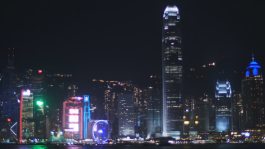 me marvel at the unique nature of individual creativity. The expression of creativity is as endless as the act of creativity itself and human nature continues to discover and define different ways and applications for their talents. The development and evolution of technology, a creative expression in itself, also enables many different forms of creativity to emerge.
me marvel at the unique nature of individual creativity. The expression of creativity is as endless as the act of creativity itself and human nature continues to discover and define different ways and applications for their talents. The development and evolution of technology, a creative expression in itself, also enables many different forms of creativity to emerge.
I had the opportunity to spend some time at the premises of a particular firm in Shenzhen, China, who 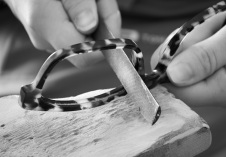 manufactures eyewear in a very unusual way. Hitherto opticians and wearers of glasses have been at the mercy of the designers and creators of eyewear. It seems that it is only in recent years that there has been an awareness among manufacturers that glasses may have a purpose beyond being functional and allowing the wearer to see the world in its intended glory. Not only do they serve a practical purpose and are a necessity for many people, but they also have the potential to become an important element of the wearer’s attire. Above all they are capable of enhancing the appearance and unique facial characteristics of the wearer, expressing a personal signature.
manufactures eyewear in a very unusual way. Hitherto opticians and wearers of glasses have been at the mercy of the designers and creators of eyewear. It seems that it is only in recent years that there has been an awareness among manufacturers that glasses may have a purpose beyond being functional and allowing the wearer to see the world in its intended glory. Not only do they serve a practical purpose and are a necessity for many people, but they also have the potential to become an important element of the wearer’s attire. Above all they are capable of enhancing the appearance and unique facial characteristics of the wearer, expressing a personal signature.
 However, opticians and wearers of glasses have had to contend with what the manufacturers of these vital pieces of apparatus decided to produce. Historically the functional aspect has taken precedence at the cost of appearance. Finally, in recent years the concept of glasses as an enhancement to the appearance of the wearers dawned on the manufacturers. However, opticians and their clients have continued to be passive participants in the process, having to be content with what the manufacturers decided to produce.
However, opticians and wearers of glasses have had to contend with what the manufacturers of these vital pieces of apparatus decided to produce. Historically the functional aspect has taken precedence at the cost of appearance. Finally, in recent years the concept of glasses as an enhancement to the appearance of the wearers dawned on the manufacturers. However, opticians and their clients have continued to be passive participants in the process, having to be content with what the manufacturers decided to produce.
Then, some ten years or so ago a creative and entrepreneurial young man had a vision to turn the design and manufacture of eyewear upside down and TD Tom Davies was borne. Tom Davies created a unique and innovative process that enabled the production of bespoke frames. This approach allows both the optician and the client to be co-creators with the manufacturer, TD Tom Davies. Together they are able to create a pair of frames that will not only fit the wearer perfectly, but which also takes into account their lifestyle and unique personality. 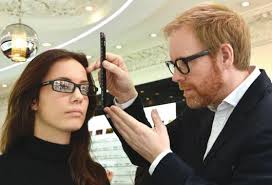 The result is eyewear that is unique to the individual from the colour to the shape of the frames. This innovative approach to eyewear design has meant TD Tom Davies is in a league of its own. For those with the means, the master himself offers a service akin to haute couture.
The result is eyewear that is unique to the individual from the colour to the shape of the frames. This innovative approach to eyewear design has meant TD Tom Davies is in a league of its own. For those with the means, the master himself offers a service akin to haute couture.
Continuing with the theme of creativity, I had the opportunity to visit the famous artist village in Shenzhen that attracts buyers from all over the world. What makes this particular artist village unique is the high concentration of artists with the ability to reproduce and copy unique works of art. Wandering around the streets of the village offers the surreal experience of coming face to face with variations of many of the original and famous masterpieces created throughout the centuries. The artists will also produce paintings from personal photographs from portraits to landscapes and many more.
The experience made me reflect on Eugene’s own creativity that shared a similarity with those of the artists I encountered. Like them he also started with a blank canvas, but instead of paint, pencil or other material, Eugene had mastered the art of using needle and thread with which to create his own works of art. His ‘paintings’ were unique pieces of embroidery reflecting a particular theme or view that had inspired him.
I also reflected on the fact that human beings are themselves unique individual works of art and no artist, no matter how skilled will be able to copy the exclusivity of each individual. It was Eugene’s particular individuality that served as inspiration for me to write my tribute and to share with others what made him the one off work of art that he was.







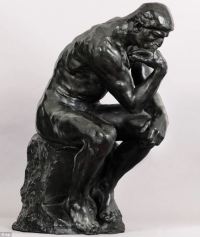





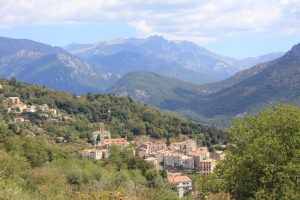


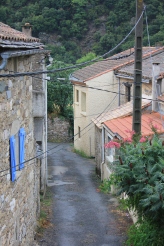 onment meant that working hard was seen as honorable. This philosophy was possibly taken to extremes by a further belief that considered idleness to be avoided at all costs. An idle state was seen as leading to all manner of bad behaviours that will eventually get one into trouble. However, the result was that one was forever driven to be active and suffered feelings of guilt when indulging in any time for relaxation.
onment meant that working hard was seen as honorable. This philosophy was possibly taken to extremes by a further belief that considered idleness to be avoided at all costs. An idle state was seen as leading to all manner of bad behaviours that will eventually get one into trouble. However, the result was that one was forever driven to be active and suffered feelings of guilt when indulging in any time for relaxation. On the other hand, seeking instant gratification can have negative consequences for both the individual as well as others. An example that comes to mind is the greed of the bankers and their addiction for immediate gratification, which has resulted in the collapse of many economies. The repercussions of their pursuit for instant gratification have had significant and long-term consequences for many people around the world.
On the other hand, seeking instant gratification can have negative consequences for both the individual as well as others. An example that comes to mind is the greed of the bankers and their addiction for immediate gratification, which has resulted in the collapse of many economies. The repercussions of their pursuit for instant gratification have had significant and long-term consequences for many people around the world.
